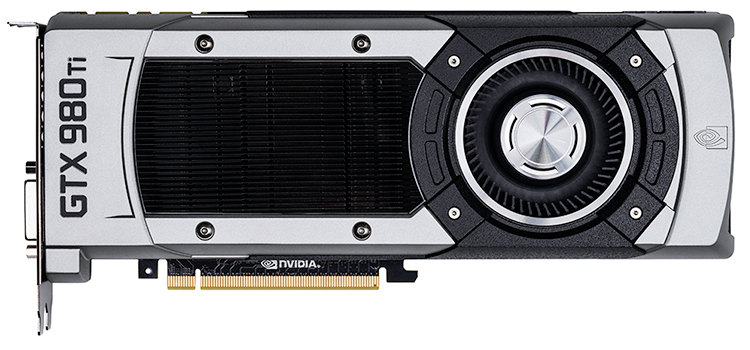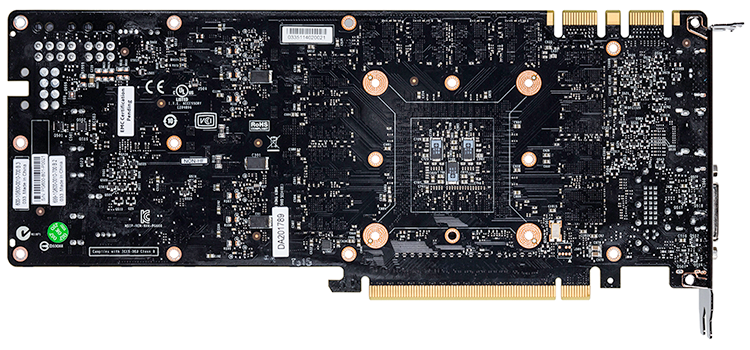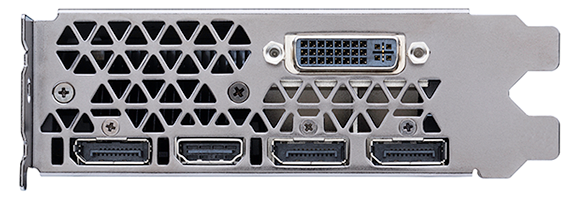Introduction
Nvidia came in swinging with the GeForce GTX Titan X graphics processor that was outed in March of this year. A full implementation of the GM200 die means it's a big bruiser of a GPU that's still fabbed on the very mature 28nm process.
8bn transistors that take their cue from the energy-efficient second-generation Maxwell architecture means Titan X can do a lot with a 250W power budget. Nvidia goes big on memory, ramping it all the way to 12GB, ostensibly suiting applications common on workstations, but Titan X remains the king of the consumer graphics hill, too... at least until AMD's Fiji architecture comes to market in a month's time.
Nvidia is seeking to cement its position as provider of premier consumer GPUs with the release of the GeForce GTX 980 Ti. Said GPU takes in almost all of the goodness present in Titan X, reduces the overly-massive framebuffer in half, and creates a card that it hopes will challenge AMD's upcoming best from both price and performance points of view.
So how is GeForce GTX 980 Ti different from Titan X, and which compromises has Nvidia made to ensure it hits a lower price point? Let's find out.
GeForce GTX Titan X (12GB) |
GeForce GTX 980 Ti (6GB) |
GeForce GTX 980 (4GB) |
GeForce GTX 780 Ti (3GB) |
Radeon R9 290X (4GB) |
Radeon R9 290 (4GB) |
|
| Launch date | March 2015 |
June 2015 |
September 2014 |
November 2013 |
October 2013 |
November 2013 |
| Codename | GM200 |
GM200 |
GM204 |
GK110 |
Hawaii |
Hawaii |
| Process (nm) | 28 |
28 |
28 |
28 |
28 |
28 |
| Transistors (mn) | 8,000 |
8,000 |
5,200 |
7,080 |
6,200 |
6,200 |
| Approx Die Size (mm²) | 601 |
601 |
398 |
551 |
438 |
438 |
| Full implementation of die | Yes |
No |
Yes |
Yes |
Yes |
No |
| SM Units | 24 |
22 |
16 |
15 |
NA |
NA |
| Processors | 3,072 |
2,816 |
2,048 |
2,880 |
2,816 |
2,560 |
| Texture Units | 192 |
172 |
128 |
240 |
176 |
160 |
| ROP Units | 96 |
96 |
64 |
48 |
64 |
64 |
| Peak GPU Clock/Boost (MHz) | 1,076 |
1,076 |
1,216 |
928 |
1,000 |
947 |
| Peak GFLOPS (SP) | 6,611 |
6,060 |
4,981 |
5,345 |
5,632 |
4,849 |
| Peak GFLOPS (DP) | 207 |
189 |
156 |
223 |
704 |
606 |
| Memory Clock (MHz) | 7,012 |
7,012 |
7,012 |
7,012 |
5,000 |
5,000 |
| Memory Bus (bits) | 384 |
384 |
256 |
384 |
512 |
512 |
| Max bandwidth (GB/s) | 336 |
336 |
224 |
336 |
320 |
320 |
| Default memory size (MB) | 12,288 |
6,144 |
4,096 |
3,072 |
4,096 |
4,096 |
| Power Connectors | 8+6-pin |
8+6-pin |
6+6-pin |
8+6-pin |
8+6-pin |
8+6-pin |
| TDP (watts) | 250 |
250 |
165 |
250 |
250 |
250 |
| GFLOPS per watt | 26.44 |
24.24 |
30.19 |
21.38 |
22.52 |
19.40 |
| Current price (Newegg) | $999 |
$649 |
$549 |
NA |
$399 |
$299 |
A chip off the Titan X block, of course
Focussing on the two left-hand columns is instructive. GTX 980 Ti drops two of the Titan X's 24 SM units to deliver a total of 2,816 ALUs. There's a commensurate drop in texture units because they're tied into the SM units. And for what it's worth, there's a diminution of L2 cache, too, from 3MB to 2.75MB.
Imagined on a clock-for-clock basis the top-end of the GTX 980 Ti GPU is about 10 per cent weaker than Titan X. Thankfully Nvidia doesn't take the same trimming tack for the back end, leaving the 384-bit interface and 7Gbps memory intact.
Though there's no throughput difference on the back-end/ROP setup, Nvidia sensibly culls card-accessible memory to 'just' 6GB, or half that of Titan X. This move alone saves cost and power thereby enabling partners to launch higher-clocked cards without too much fuss. Is 6GB enough for a premium graphics card of 2015? Our knowledge community readers seem to think so.
GeForce GTX 980 Ti is the card for those who don't want to spend significantly more for the marginal performance gains made possible by Titan X. Nvidia has set the newest Ti's price at $649 (£520 or so), pre-empting AMD's financial plays with the upcoming Radeon R9 390X.
There is no fundamentally new technology here; this is Titan X on a small diet. We therefore know that it will be a fast, fast GPU, likely 30 per cent speedier than the first-generation GeForce GTX 980 and present Radeon R9 290X.
Unlike Titan X, Nvidia's partners will be able to use their in-house expertise to construct aftermarket cards equipped with higher clocks and massive cooling. Expect to see the same type of heatsinks that are currently available on the GTX 980, which is rated at the same TDP, but we may have to wait a short while before such cards hit the shops. The board layout of GTX 980 Ti conforms to Titan X, not GTX 970/980, meaning some redesign is almost inevitable. Perhaps the very best cards will only become available once partners use fully-custom boards with upgraded circuitry.












